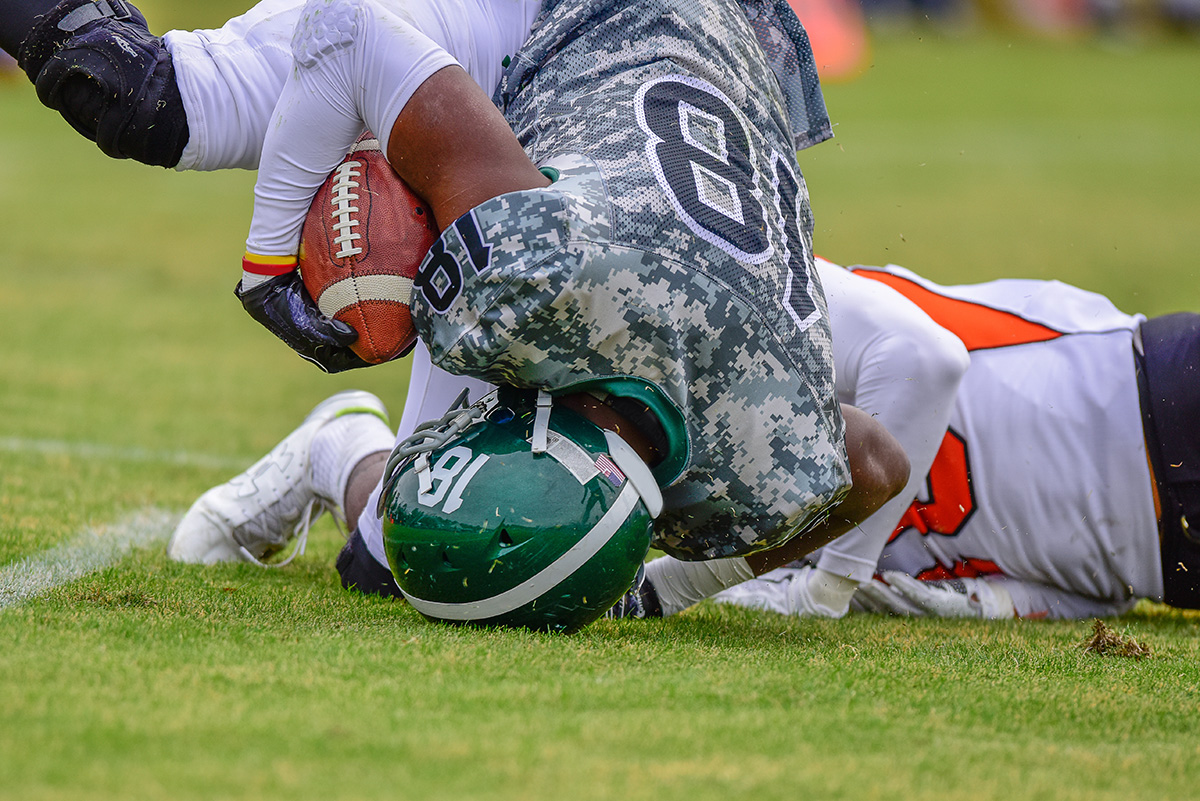Health Capsule
How Football Raises the Risk for Brain Injury

Brain injuries can arise from hits to the head during contact sports like football or soccer. Repeated brain injuries can lead to a condition called chronic traumatic encephalopathy, or CTE. CTE is a serious issue for American football players. It can lead to dementia later in life and even premature death.
An NIH-funded research team is working to learn which types of head impacts are most risky. They looked at data from earlier studies that used specialized helmets to measure head impacts during football games. These studies included youth, high school, and college games.
From these data, the scientists estimated the number and types of head impacts that different players might have each season. They compared this data with CTE diagnoses from more than 600 former football players.
The team found that the risk of having CTE varied by the person’s highest level of play. It also increased the longer a person played football. For each additional year of play, the risk of CTE rose by 15%. The type and force of head impacts were also stronger predictors of CTE risk than the number of hits to the head a player experienced. In contrast, the number of reported concussions were not linked with CTE. Concussions are hits to the head that result in signs or symptoms of brain injury.
“This study suggests that we could reduce CTE risk through changes to how football players practice and play,” says study co-lead Dr. Daniel Daneshvar of Mass General Brigham. “If we cut both the number of head impacts and the force of those hits in practice and games, we could lower the odds that athletes develop CTE.”
NIH Office of Communications and Public Liaison
Health and Science Publications Branch
Building 31, Room 5B52
Bethesda, MD 20892-2094
Contact Us:
nihnewsinhealth@od.nih.gov
Phone: 301-451-8224
Share Our Materials: Reprint our articles and illustrations in your own publication. Our material is not copyrighted. Please acknowledge NIH News in Health as the source and send us a copy.
For more consumer health news and information, visit health.nih.gov.
For wellness toolkits, visit www.nih.gov/wellnesstoolkits.




